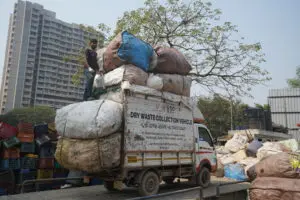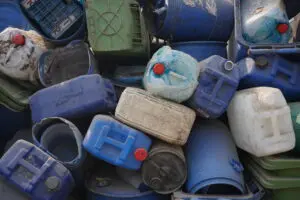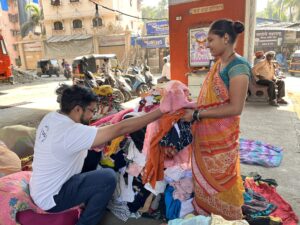As plastic use continues to rise in India, managing the resulting waste has become an important environmental priority. New initiatives and improved systems are helping the country move toward more sustainable plastic practices.
At the centre of this transformation is Extended Producer Responsibility (EPR), a policy approach that is redefining how producers, consumers, and recyclers interact.
At ReCircle, we have witnessed this shift firsthand. The rise of plastic EPR in India is more than a compliance requirement. It is a new system of shared accountability that connects every part of the value chain. Through technology, traceability, and collaboration, EPR is turning waste into a valuable resource and helping India move towards a circular economy.
1. Understanding Plastic EPR: Responsibility Beyond Production
Extended Producer Responsibility (EPR) is a policy mechanism that makes producers accountable for the environmental impact of the plastic they introduce into the market. In simple terms, if a company manufactures or sells products in plastic packaging, it is also responsible for ensuring that packaging is collected, recycled, or properly disposed of after use.
The Legal Foundation
EPR for plastic waste in India was introduced under the Plastic Waste Management (PWM) Rules, 2016, and further strengthened through the PWM (Amendment) Rules, 2022. These rules apply to:
- Producers of plastic packaging materials
- Importers of packaged goods
- Brand Owners using plastic packaging
All such entities must register on the Central Pollution Control Board (CPCB) EPR portal, declare the type and quantity of plastic they use, and meet annual recovery and recycling targets.
This marks a significant shift, as responsibility now extends beyond production and sale, all the way to the product’s end-of-life.
2. Why Plastic EPR Matters: From Linear to Circular Thinking
For years, India’s plastic economy was largely linear: make, use, and discard. EPR changes this by creating a closed-loop system where materials are reused and recycled instead of wasted.
The objectives of plastic EPR go beyond waste collection. They include:
- Encouraging recyclability in packaging design
- Reducing landfill waste and preventing leakage into the environment
- Formalising the informal sector, which forms the backbone of India’s recycling system
- Bringing transparency through verified, traceable reporting
- Driving accountability for every stage of the material lifecycle
When implemented effectively, EPR does not just improve recycling. It builds a more resource-efficient economy.
3. The Plastic EPR Landscape in India: Progress and Potential
India generates around 3.4 million tonnes of plastic waste every year, and already recycles about 60% of it, a figure far higher than many developed nations. Much of this success is credited to the informal waste sector.
However, the challenge has always been fragmentation and lack of traceability.
The EPR India framework is addressing this by:
- Mandating digital registration of producers, importers, and brand owners
- Requiring proof of waste recovery through Plastic Waste Processing Certificates (PWPCs)
- Introducing digital verification to avoid double counting and ensure transparency
More than 3,000 entities are already registered on the CPCB’s EPR portal, and the system is expanding every year. This is laying the groundwork for a truly circular plastic economy in India.
4. Connecting the Dots: How EPR Links Consumers, Brands and Recyclers
The success of plastic EPR lies in how it unites stakeholders who were once disconnected. It builds an ecosystem where every participant plays a defined role in creating circularity.
Consumers – The Starting Point of the Chain
Consumers are learning that segregation at source and responsible disposal directly impact recycling outcomes. By choosing products made with recycled content or participating in collection drives, they contribute to a cleaner system.
At ReCircle, we regularly engage communities to help them understand how small everyday actions can feed into large-scale change.
Brands – From Compliance to Circular Leadership
For many brands, EPR began as a compliance requirement. But today, leading companies see it as a chance to build consumer trust, improve material efficiency, and demonstrate genuine climate leadership.
Brands that partner with certified networks like ReCircle can ensure verified waste recovery and achieve EPR targets while contributing to India’s sustainability goals.
Recyclers – The Backbone of EPR Implementation
For recyclers, EPR for plastic waste has created formal demand for traceable recycling. Many recyclers are investing in better washing, sorting, and extrusion technologies to produce higher-quality materials.
This growing demand for transparency and quality is reshaping India’s recycling landscape for the better.
5. The Role of Technology: Building a Transparent Circular Chain
EPR policies provide structure, but technology provides the system to make them work efficiently.
At ReCircle, we enable this through ClimaOne, our circular supply chain platform driven by pure technology.
ClimaOne offers full visibility and control over a brand’s material flows, from sourcing and collection to recycling and disposal. It allows companies to:
- Track every kilogram of plastic recovered and recycled
- Access verified digital records for compliance reporting
- Identify inefficiencies and reduce material wastage
- Optimise supply chains to meet sustainability goals
Through ClimaOne, brands can turn EPR compliance into a strategic advantage, achieving both environmental impact and operational efficiency.
This is where the future of recycling lies: in data-driven circularity, where technology ensures every piece of plastic is accounted for and reused responsibly.
6. EPR as a Catalyst for Systemic Change in India
The plastic EPR framework has triggered long-term shifts across India’s waste management ecosystem:
- Formalisation of informal waste workers, ensuring fair wages and social inclusion
- Private sector investment in advanced recycling facilities
- Digital integration across the waste value chain through platforms like ClimaOne and the CPCB portal
- Packaging innovation, as brands redesign products to improve recyclability
These trends are gradually building a resilient, transparent, and circular plastic economy that benefits both the environment and local communities.
7. Challenges Ahead: Building on the Momentum
While progress has been strong, a few challenges still stand in the way of India’s EPR success story:
- Uneven implementation across states due to varying infrastructure
- Data verification gaps, especially among smaller recyclers
- Low awareness of waste segregation among consumers
- Price competition between recycled and virgin plastic
Overcoming these issues will require consistent enforcement, policy clarity, and stronger collaboration between public and private players.
At ReCircle, we believe that these challenges are opportunities for innovation, and each one is a chance to make recycling more inclusive, efficient, and scalable.
8. ReCircle’s Role in India’s EPR Transformation
For nearly a decade, ReCircle has worked to make waste management transparent, traceable, and technology-driven.
We contribute to the success of plastic EPR in India through:
- Organised collection networks that bring together informal waste workers and recyclers
- Digital traceability through ClimaOne, ensuring that every kilogram of plastic is tracked from recovery to recycling
- Brand partnerships that help producers meet EPR targets responsibly and verifiably
- Awareness programmes that engage communities and promote responsible consumption
Our work proves that sustainability and scalability can go hand in hand when guided by data, collaboration, and accountability.
9. The Road Ahead: A Smarter, Circular Future
The coming years will define how effectively India’s EPR system matures. Three major shifts are on the horizon:
- Global policy alignment, as more countries adopt EPR-style mandates that drive demand for traceable recycled materials
- Digital traceability as standard, making verified data the norm for all waste recovery
- Inclusive circularity, where India’s informal sector remains central but becomes better integrated into formal systems
If India continues on this path, it can emerge as a global leader in plastic circularity, turning waste into a resource and setting a benchmark for sustainable development.
Conclusion: Plastic EPR Is a Bridge, Not a Burden
The plastic EPR movement is changing the way India looks at plastic waste, turning it from a problem into a valuable resource.
By connecting consumers, brands, and recyclers through shared responsibility and digital transparency, EPR India is laying the foundation for a circular future.
At ReCircle, we are proud to be part of this transformation. Through ClimaOne, our technology-driven circular supply chain platform, and our nationwide collection network, we are helping businesses turn compliance into impact and plastic into possibility.
Plastic is not the enemy. Mismanagement is.
And with the right systems, technology, and intent, we can make sure that no plastic ever goes to waste again.
Frequently Asked Questions (FAQs)
• Producers of plastic packaging
• Importers of packaged goods
• Brand owners using plastic packaging
These entities must register under CPCB’s EPR system and fulfil their recovery and recycling obligations through certified recyclers or partners like ReCircle.
• Consumers segregate and dispose waste responsibly
• Brands ensure the plastic they use is recovered and recycled
• Recyclers convert plastic waste into reusable materials
Platforms like ReCircle’s ClimaOne connect all three through digital traceability for transparent and efficient recycling.
• Inconsistent enforcement across states
• Low consumer awareness regarding waste segregation
• Data verification gaps in smaller recyclers
• Cheaper virgin plastic competing with recycled plastic
Collaboration between government, businesses, recyclers, and consumers—backed by technology—is essential to overcome these issues.




